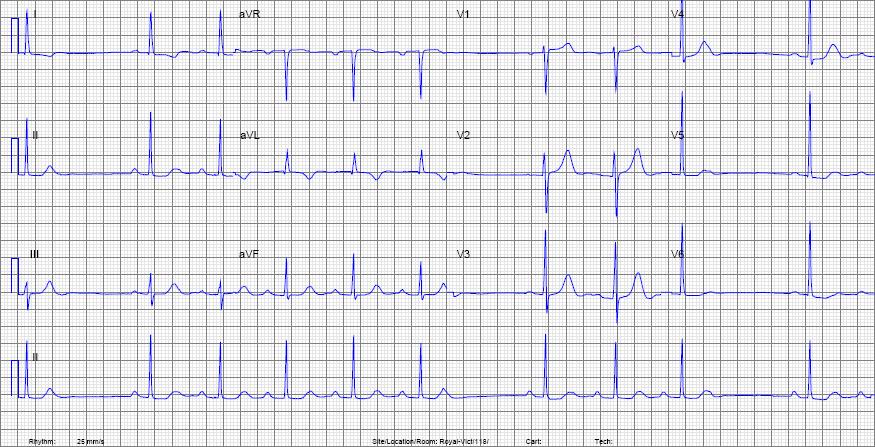
Normally, the SA node sends a wave of depolarization through the atria causing atrial contraction. This same wave of depolarizaton is conducted down through the AV node, where it waits temporarily before reaching the ventricles and causing ventricular contraction.
What happens if the SA node fails to depolarize? The heart does not cease beating, instead another pacemaker will take over. The cells of the cardiac conduction system outside the SA node also have the ability to act as pacemakers - each class of pacemaker cells has its own intrinsic rate at which it likes to pace:
The reason that the nice regular rhythm generated by the SA node is not interupted by contractions generated by all these other pacemakers is that the SA node has the fastest intrinsic pacing rate. Every time the SA node fires, it sends out a wave of depolarization that depolarizes the other pacemakers before they can fire. So they never get a chance to fire as long as the SA node keeps pacing well.
For example if the SA node stops functioning, an atrial focus may take over and pace at 60-80bpm, if the atrial foci are also unable to pace, a junctional focus may take over and pace at 40-60bpm.
The tracing below shows an escape rhythm. Examine the rate and determine what pacemaker is most likely generating the contractions.

| Rate | Pauses with runs at around 75bpm |
| Rhythm | The pacemaker has a rate in 60-80bpm so it is likely either the SA node itself with pauses, or an atrial focus. |